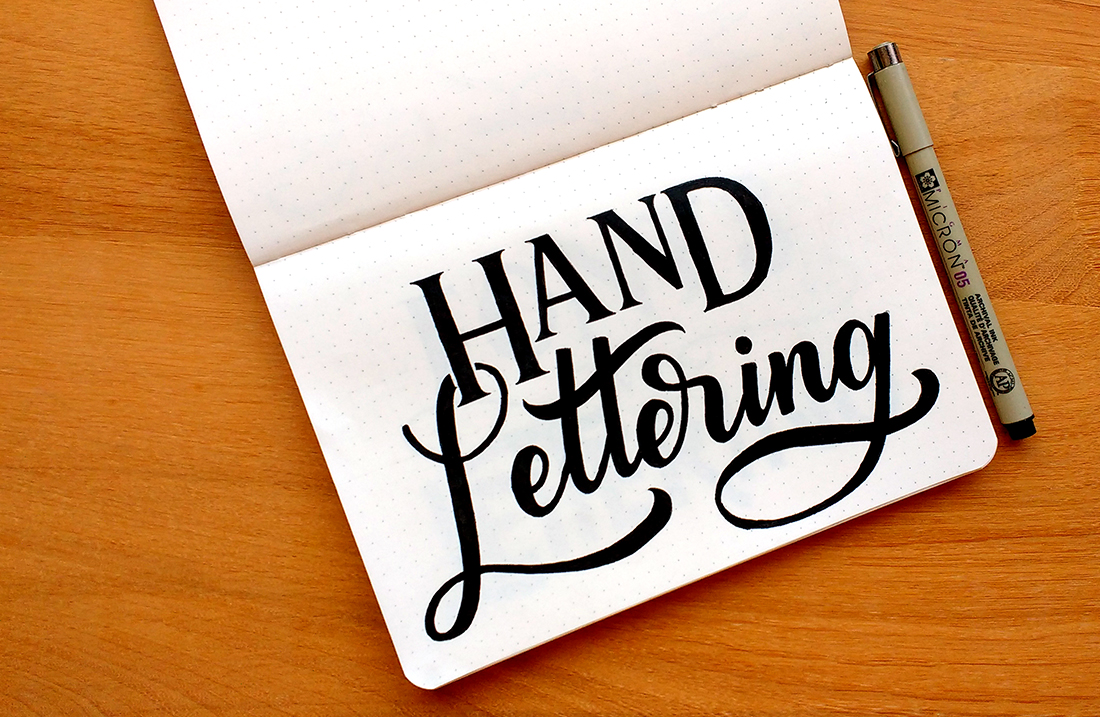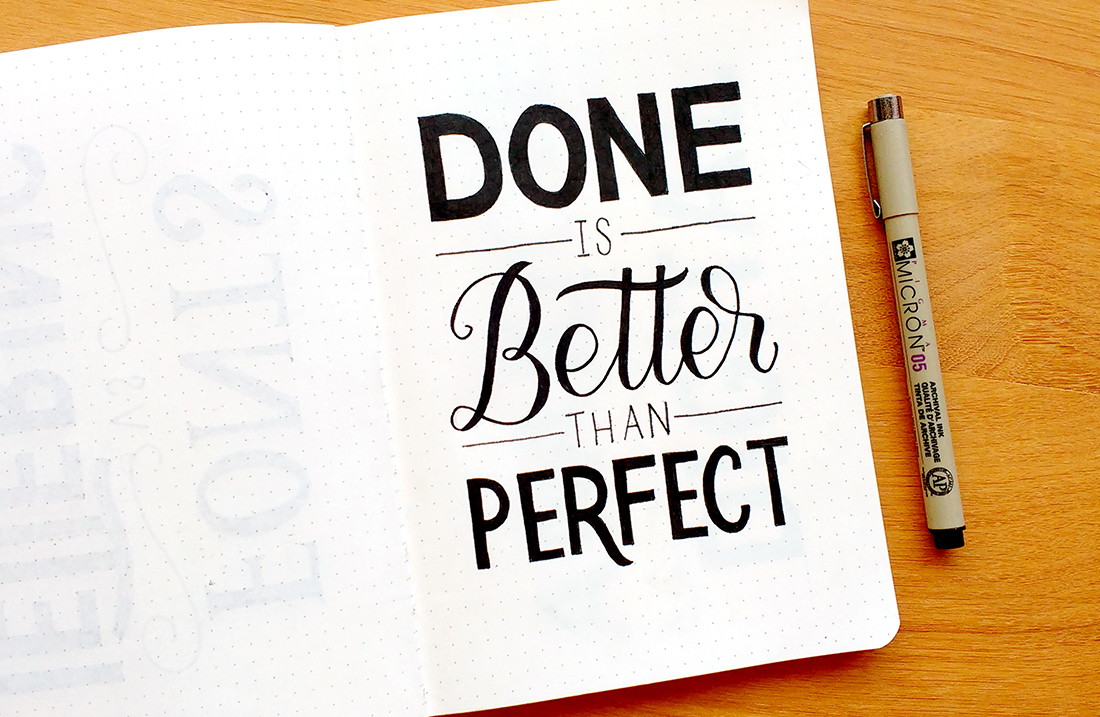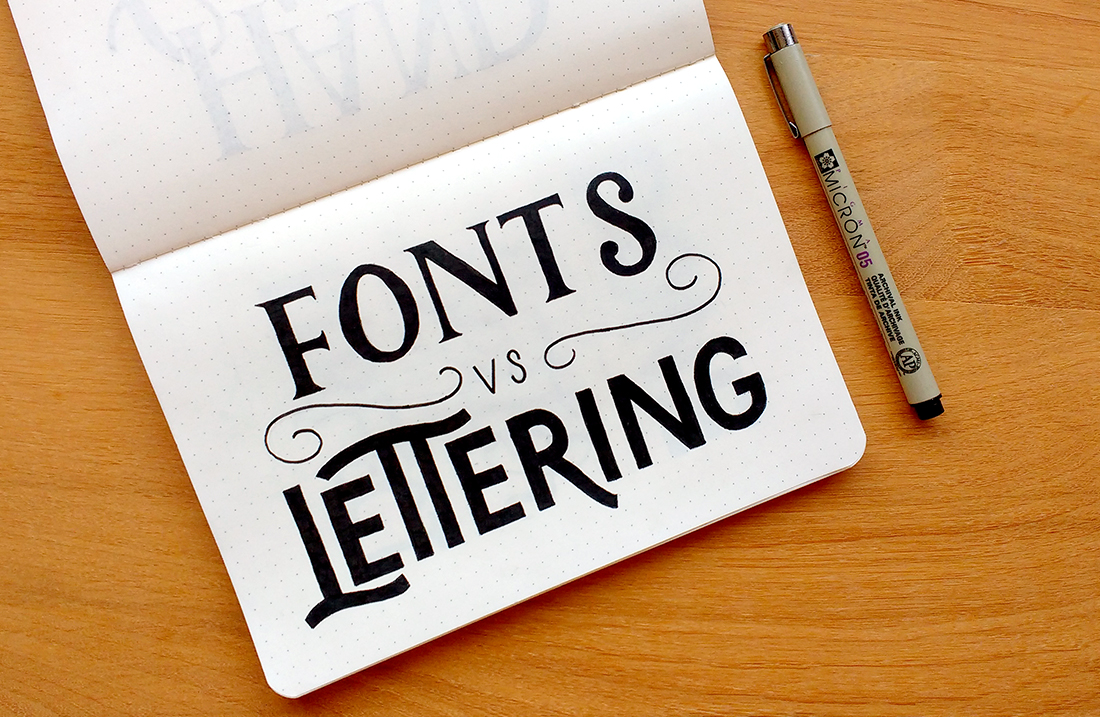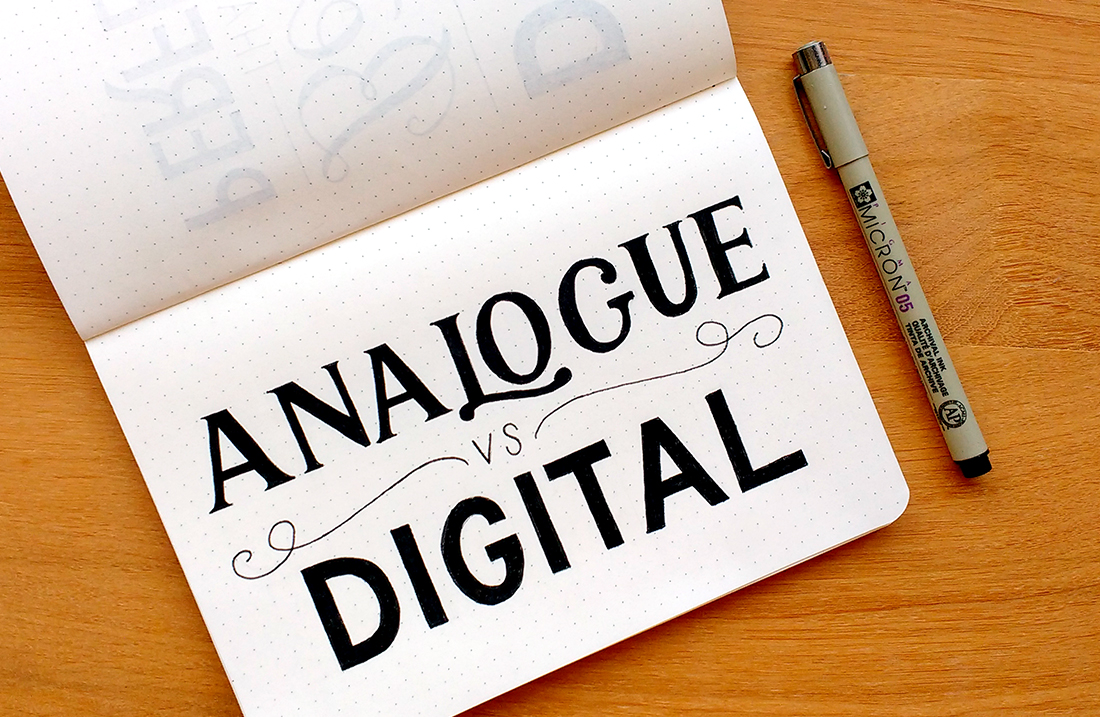In the last few years, hand lettering has become increasingly popular. We’ve seen a popularity surge and many people are interested not only in seeing it but also learning it. But, what exactly is hand lettering? I know that it’s a trending topic right now, but a lot of people still don’t know exactly what it means. In this post, I’ll guide you through everything you need to know about hand lettering.
What exactly is hand lettering?
Hand lettering is essentially drawing letters. It’s different from calligraphy, where we use basic strokes to form letters and words. With hand lettering, each letter is carefully thought. When creating a hand lettering piece, each letter and word is created to work in those situations only. Typically, we don’t create a full alphabet before starting a lettering piece – we think about each word and how they fit together in a composition.
Usually, when hand lettering artists create an alphabet – like I’ve done in my alphabet series – it’s not supposed to be used in different situations (unless they’re trying to create a font out of it, but that’s a totally different subject that’ll write about in another blog post.) The letters from a hand-lettered alphabet are usually illustrated and each one is meant to be a completely different piece.
Note: This post contains affiliate links, which means if you happen to purchase something, I’ll make a small commission at no extra cost to you! See my full disclosure here.
Who invented hand lettering?

It is clear that writing wasn’t invented by a specific person in any time or place, but it was evolved in several places and during different times. It is common sense that the very first form of writing were the drawings found in the caves from the paleolithic era. Since writing wasn’t actually a thing at the time, they found out a form of expression: through drawing inside their caves.
When type was invented, there were a lot of limitations that came with it. There wasn’t a type in a large scale, you couldn’t distort it, make modifications, set it at an angle and many more things that are possible with fonts nowadays.
So when people needed a type in large scale, that’s when the hand lettering artists came to mind. They were hired to create all sorts of lettering that wasn’t possible to achieve with the types that existed at the time.
Why create letters by hand when you have so many fonts to choose from?
I’m pretty sure that’s one of the most asked questions every hand lettering artist gets. We use hand lettering to create something unique – something that no one will ever be able to reproduce by just downloading the same font (well, of course, people can copy but that’s not the point I’m trying to make here.) It also has the handmade look and feels. In a world where technology is at its highest, creating something by hand is a completely different feeling. Knowing that you don’t need your computer to create something is amazing.
When we’re creating letters by hand, we have complete control over it. Sure, we can absolutely manipulate fonts in Illustrator or Photoshop, but that won’t be same. While drawing letters, you can create different illustrative letters, put words into different shapes, integrate words and letters, add flourishes and much more. We can do anything we want.
What can you do with hand lettering?
Hand lettering can be used for absolutely everything you can think of. Here’s a list of things I came up with – this list could be infinite – honestly, the possibilities are endless.
– hand-lettered logo
– posters
– t-shirt designs
– magazine covers
– social media posts
– album covers
– lyric videos
– cases & skins for phones, tablets, and computers
– mug designs
– stickers
– greeting cards
– bags
– advertising campaigns
– book covers
– movie posters
– drinking labels
– murals
– calendars
As I said, the list above doesn’t have everything you can do with hand lettering. These are just some examples that I could think of at the top of my head. If you want me to add anything else that you may feel like is important, don’t hesitate to leave a comment.
Hand lettering doesn’t have to be perfect

One of the great things about hand lettering is that it doesn’t have to be perfect. After all, it is hand-drawn, isn’t it? Of course, you need to have some basic knowledge about typography in order to draw the letters the right way, but it doesn’t need to imitate a font. If you want fast and perfect, by no means, choose a font. But if you want personality and handmade, definitely choose hand lettering.
How can you tell if it’s hand lettering or fonts?

Even though I just said that hand lettering doesn’t have to be perfect, a lot of the times it sure feels like it is. Many artists digitize their artwork and it seems like it’s so perfect that we think “oh, this is gotta be a font, what font is that?” Even some pieces done on paper can feel like it’s printed out of a font, because of the skills of the hand lettering artist.
For me, one of the things that I do to figure out if it’s hand lettering or a font is: I check for the same letters throughout the phrase or the word. For instance, if there’s more than one letter ‘A’ and they both look sightly different, you can tell that it’s hand-lettered.
But what if there aren’t two of the same letters? Well, you can check for interactions between letters and words that wouldn’t happen if it was done with a font.
Analog vs. Digital

Hand lettering can be done both traditionally (on paper) or digitally (with a graphics tablet or an iPad). There are many hand lettering artists that prefer to work on paper first and then take it to the computer for a more refined and final piece. But with the launch of the iPad Pro two years ago, many hand lettering artists started taking their work to the next level by using apps like Procreate to draw letters directly on the iPad.
Some hand lettering artists are now working mainly with the iPad Pro. Working digitally has its advantages: you can erase easily, undo, trace your work without wasting several pieces of paper and completing a piece in much less time if you were to do it traditionally.
Some of the artists that I follow on Instagram like Risa Rodil, Belinda Kou and Shauna Lynn use digital tools for their work. Risa mainly uses Illustrator for all of her pieces; Belinda uses the iPad Pro with an app called Procreate or Adobe Fresco, and Shauna uses Photoshop in her Surface Pro (a Microsoft computer/tablet that is also useful for hand lettering artists).
You don’t necessarily need to have those digital tools to create hand lettering. In fact, you don’t need any specific tools to do it at all. Just a printer paper and a pencil will do! Many hand lettering artists still stick with paper, pencil, and pen only. It’s really up to the artist and what makes them more comfortable.
What do you like the most: working on paper or digitally?











3 Comments
Between working on the paper or digitally . I like working on the paper . The reason is because you can draw the pattern that you like easily . No need to measure and hand-made produce is better than the digitally . For example if you can’t find the model of the pattern , you can’t make the pattern and iPad is hard to control to compare with working on the paper .
Amazing! I love working on paper, too. There are definitely pros and cons of working with each of them but I think nothing beats the feeling of doing something by hand on paper!
Thank you so much for your input!!